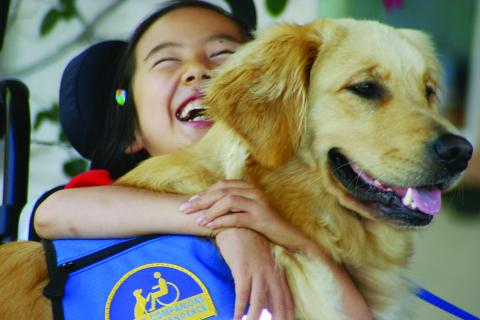
You may be most familiar with the concept of guide dogs helping the blind. However, in recent years, assistance dogs are being trained to help the deaf, vets suffering with PTSD, and in many other ways. In fact, dogs can aid, comfort and help people with all manner of physical and mental difficulties. Great assistance dogs are made that way through hours of training. Not unlike great athletes, they train for hours daily until they’re ready to partner with their human. Then the two of them train together. Marcie Davis is a paraplegic who’s long enjoyed the assistance of her dog Misty. Dedicated to social justice, Marcie wanted to do something to recognize the importance of these dogs in a larger way. So, she created a week of recognition. The 2nd week of August is International Assistance Dog Week – a chance to raise awareness of the importance of these dogs and the trainers who train them.
In 2016, that week is August 7-13 and it’s a time to acknowledge all that these dogs do for the humans they serve. For those who aren’t part of this world, you may be surprised at the process.
The Training of an Assistance Dog
It starts when they’re puppies. The puppy raiser is an experienced dog handler and commits several hours a week to training the puppy in basic manners – no jumping, sitting, etc. They’ll attend puppy kindergarten and work closely with an organization like Canine Companions for Independence, who will take over the training when the puppy is 14-16 months old. Next, the pup enters a six-nine month training program.
During the first couple weeks the puppy undergoes a battery of health and temperament tests. If the pup passes all the tests, he continues the rigorous training eventually learning over 40 commands. At any point, during the training, if the dog shows signs of stress, the dog may be released and make someone a great pet.
At the end of the program, the dogs are paired with their recipient and the two train together for several weeks. Depending on the need, the dogs may trained to open doors, bring certain items or alert in case of a seizure. After graduation, there are regular check ins and follow up workshops for both dog and human.
Certain breeds often make for good assistance dogs. You’re probably familiar with German Shepherds, but labs and even standard poodles can make a good assistance dog. If you’d like to find out more about assistance dogs and maybe even volunteer to raise a puppy, then you can find out more at Paws with a Cause.